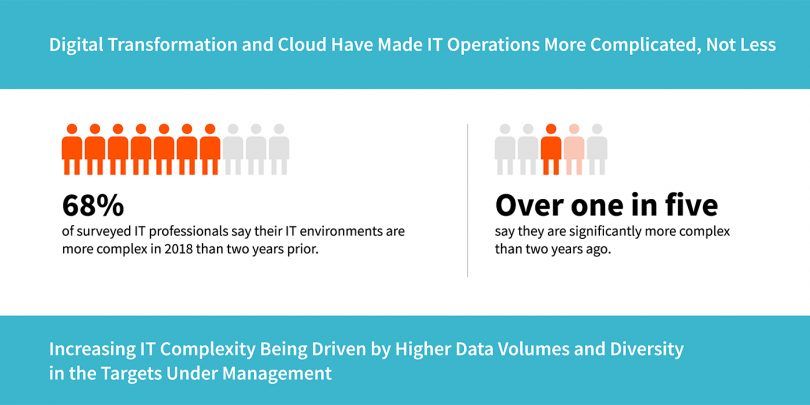Survey of over 600 global technology decision-makers uncovers need to implement automated operations to thrive in increasingly complex IT environments
As IT environments increase in complexity and the amount of data, devices, systems and platforms expand to become beyond the management capabilities of IT Ops teams, putting in place automated operations across IT Ops processes becomes essential.
ESG’s 2018 IT Spending Intentions Survey is an annual survey of over 600 global technology decision-makers – check out the infographic below to gain insights into what’s driving the need for IT Process Automation across IT Ops teams.
The benefits from automation have risen exponentially over recent years and is now table stakes for most IT Ops teams. However, most of the benefits up to this point have been derived from task automation as opposed to IT process automation which takes automation to the next level by orchestrating tasks across tools, processes and systems. Often, the skills required to advance from task automation to process orchestration are lacking and this is why combined orchestration and automation tools that support an IT process automation strategy are so important to IT Ops teams.
IT process automation drives significant and often immediate benefits, including reductions in MTTR, improvements in quality with repeatable and consistent processes, labor and cost savings from improved efficiencies and decreased repetitive admin work and a refocus of IT Ops on supporting business digital transformation initiatives as opposed to spending the majority of time on ‘keeping the lights on’ activities.
An adjacent but no less significant benefit is that of having a foundation in place for AIOps. Machine learning and data analytics have the potential to transform and elevate IT Operations. However, the real benefits from AI will come from actionable insights – IT process automation can ensure that the intelligence gained from AI can be put to work in the form of automated, repeatable processes across IT operations that drive efficiencies and cost reductions, reduce risk and increase service quality.








